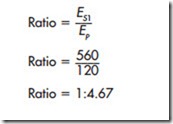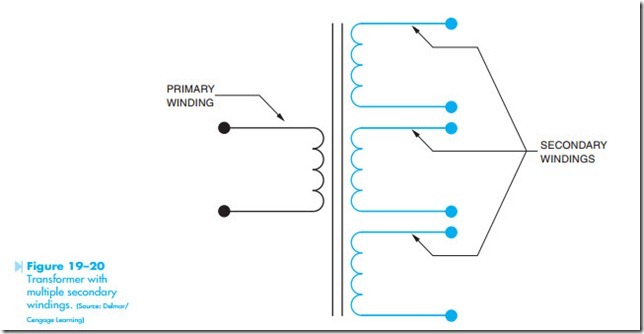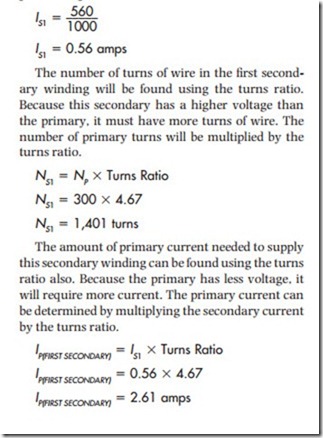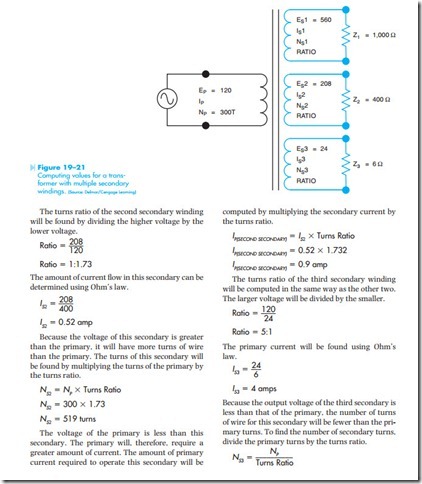COMPUTING VALUES FOR TRANSFORMERS WITH MULTIPLE SECONDARIES
When computing the values of a transformer with multiple secondary windings, each secondary must be treated as a different transformer. For example, the transformer in Figure 19–21 contains one primary winding and three secondary windings. The primary is connected to 120 volts AC and contains 300 turns of wire. One secondary has an output voltage of 560 volts and a load impedance of 1,000 n. The second secondary has an output voltage of 208 volts and a load impedance of 400 n, and the third secondary has an output voltage of 24 volts and a load impedance of 6 n. The current, turns of wire, and ratio for each secondary and the current of the primary will be found.
SOLUTION: The first step will be to compute the turns ratio of the first secondary. The turns ratio can be found by dividing the smaller voltage into the larger.




